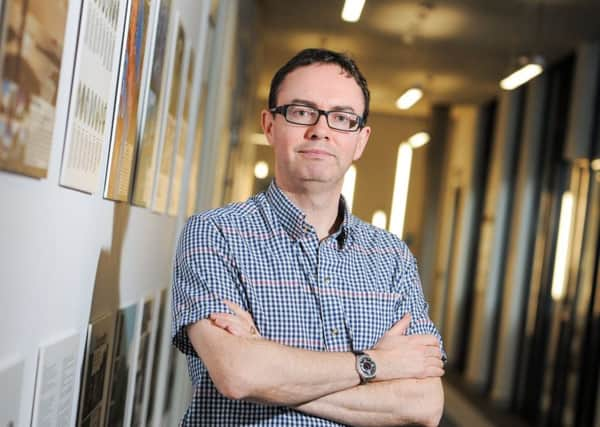How murder of Sergeant John Speed in Leeds inspired subplot of lecturer’s crime novels


Dan Laughey was eight-years-old when Sergeant John Speed was murdered in Leeds city centre. The West Yorkshire Police officer was shot after going to the aid of a colleague who was fired at during a routine check on two men acting suspiciously near the former Leeds Parish Church on Kirkgate.
“I felt quite shocked that a police officer could be killed in that way, in cold blood, as the term was used at the time,” Dr Laughey reflects. He recalls the killing, of October 31, 1984, being shown on BBC Crimewatch - a memory that has stayed with him since.
Advertisement
Hide AdAdvertisement
Hide Ad“It was a national story as it always is with the murder of a police officer and it wasn’t just the moment it occurred but also the aftermath with various leads and inquiries.”
Only a child, Dr Laughey did not follow the case intently “but I was certainly interested and the Crimewatch story stuck in my mind as well,” the 43-year-old says.
In fact, the murder and subsequent investigation has inspired part of a pair of sequential crime mystery novels that Dr Laughey has recently written.
Advertisement
Hide AdAdvertisement
Hide AdThe main storyline of his tales Chloe - Lost Girl and Chloe - Never Forget, set in Leeds, follows the present-day murder of a detective and disappearance of a student in the city, but runs alongside the subplot of a fictional cold-case enquiry relating to an incident in the 1980s where one police officer was murdered and there was an attempt to kill another.
“It’s an artistic portrayal of a particular incident in the past rather than an attempt to truly represent what happened,” Dr Laughey explains.
“Both books are dealing with a contemporary set of investigations, two major lines of inquiry, that then become connected with this 1980s incident in Leeds.”
Dr Laughey, the course leader for the undergraduate Media, Communication, Cultures degree at Leeds Beckett University, grew up in Ilkley and spent many hours of his childhood in and around Leeds city centre. He now lives in Guiseley.
Advertisement
Hide AdAdvertisement
Hide Ad“I wanted an urban setting [for the books], not a village or house on the hill narrative,” he says. “I wanted it to be set in the city, so Leeds was the most obvious option because it was what I knew.”
He was too young to remember the Yorkshire Ripper’s reign of terror in the county but recalls what he describes as “the dark days of the 1980s when Leeds had a reputation for crime and violence and a police force struggling to deal with it all”, without the technologies and surveillance that are available to them now.
“Leeds was a very different place to what it is today,” he says. “The centre of Leeds now is very safe 24 hours a day but back in the 70s and 80s, the lights would pretty much turn off after 8pm and people would be far less inclined to enter the city because of the fear of all sorts of possible attacks and violence, the fear of being a victim of crime.”
Dr Laughey, who studied a degree in English and later undertook a PhD in Sociology, wanted to blend contemporary crime with the legacy of past times in his novels.
Advertisement
Hide AdAdvertisement
Hide Ad“Bringing a cold-case investigation to bear on a contemporary murder mystery was a concept I found intriguing,” he says. “It’s only fairly recent this phenomenon of the historical crime that can be revisited, reassessed and throw up revelations that effectively rewrite the past, and the present with it.
“The idea of what’s gone before us informing the here and now is integral to my work. Cold-case enquiries are cropping up all the time, especially post-Jimmy Saville, but not a lot of crime fiction has tapped into this.”
The books were published for Amazon Kindle earlier this month and paperback editions are expected to be printed in the near future.